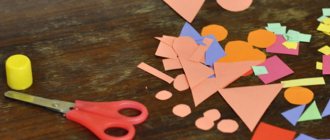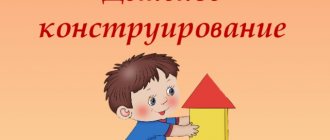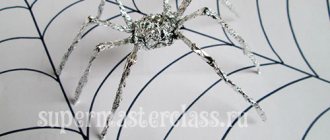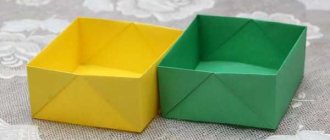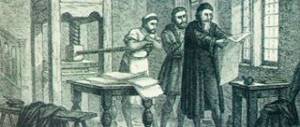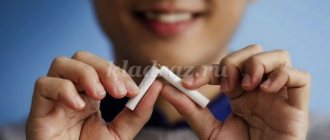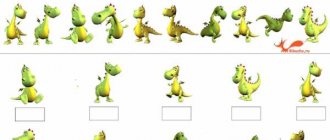Design from geometric shapes
Methodological basis for organizing children's design
from geometric shapes.
When constructing from geometric shapes, children create images, not only (and not so much) displaying their structure, but expressing their attitude towards them, conveying their character, using such a technique as “violation” of proportions, as well as color, texture, shape: a cheerful clown, a wolf, a handsome prince, etc., which leads, in the words of A.V. Zaporozhets, to “the formation of unique emotional images.”
The organization of children's design from geometric shapes includes three main directions.
Development of children's cognitive and creative abilities.
Development of artistic abilities
Development of design abilities, improvement of technical design skills.
The general methodological principles for organizing children's design from geometric shapes are:
- training built from the general to the specific; (concept - specific image, transport - modes of transport)
- inclusion of construction in various life events. (they made a snowman and moved it to the plane)
- organizing targeted observations of various objects (on the street, on a site, in an objective environment) is an important stage in the implementation of children's plans.
- a combination of individual and collective forms of construction (allows you to organize meaningful communication between children, promoting awareness of methods of activity and increasing its productivity).
Junior group:
Stage 1. Preparatory (introductory).
Stage 2. Completing construction of an unfinished object.
Stage 3. Realization of an image on a plane. Introduction of drawing - diagram.
Stage 4. The transition from constructing subject images to recreating plot compositions.
Middle group:
Stage 1. Experimenting with construction elements and completing the construction of frame blocks. (aimed at developing imagination)
Stage 2. Training in the arbitrary nature of actions to construct an object, its modification from two positions (front view, side view). Creation of plot compositions.
Stage 3. Construction of objects of various classes according to a ready-made scheme or a modified scheme.
Stage 4. Learning to plan your activities (think about a plan, outline a goal, independently draw up a plot composition diagram).
Organization of children's design from geometric shapes
in the younger group.
First stage
— preparatory for independent practical activities. First, the child is led to understand the functional purpose of the elements of the construction set - to build an image (make pictures). Then they develop an interest in practical activities and a desire to design independently.
Second phase
joint constructive activity of a child and an adult to complete the construction of an unfinished concrete image. This work is carried out with the aim of developing children's imagination, interest in the practical activity of design and mastering the action of constructing a specific schematic image of a familiar object.
Third stage -
implementation of experience in constructing various images of varying degrees of difficulty (still life of vegetables and fruits, snowman, buildings, transport, people, animals). The child, on the one hand, learns to convey the generalized structure of objects that are simple in structure, empathizing with them, begins to experience aesthetic feelings and use means of artistic expression. A holistic cognitive-emotional experience arises, which is achieved through the child’s experience of various situations.
The child’s experience of an emotional mood about the depicted object or event precedes its analysis using special means. The transition from joint to independent design activity occurs gradually in the child, due to an increase in the share of his participation in constructing the image. At this stage, children are invited not only to add, but to construct something on their own. The children were also given the task of changing the design of the image - by building it up in height and length.
One of the means of teaching children to design is a drawing diagram. The diagram conveys the contours of the geometric shapes that make up the image (the composition of the parts of the object). A schematic image can be given along with a sample for analyzing an object of a more complex design, for example, when constructing an image of transport. The diagram must be made on the same scale as the sample. This allows the child, in case of difficulty, to first solve the problem by overlaying the parts directly on the diagram, aligning their edges with the contours of the image. This technique is usually used when moving to more complex images consisting of a large number of parts of different shapes. The diagram helps children practice the technique of accurately connecting elements, highlighting the properties of an object, and more clearly imagining its structure.
Fourth stage -
The child moves along the path of a more accurate understanding and experience of the reflected event. He moves from constructing object images to recreating a plot composition based on familiar fairy tales, for example “Kolobok”. This is manifested in the ability to independently convey the main content of the work, its main event and the characteristic features of fairy-tale characters.
The child learns to independently concretize the idea of a future composition, choose means of expression, implement the idea in the material, and control its implementation.
Organization of children's design from geometric shapes
in the middle group.
First stage -
is aimed at developing children's imagination in the process of experimenting with construction elements and completing the construction of frame blocks (unfinished dissected graphic models), suggesting a wide range of design solutions.
At first, children independently experimented with familiar and new elements of the construction set, in the process of joint and independent activities.
Then riddle tasks were proposed for completing the construction of frame blocks (unfinished dismembered graphic models)
The second stage
is
aimed at developing the imagination and teaching children the intentional, arbitrary nature of actions to construct expressive images of objects of certain classes (trees, people, animals) from two positions (front view, side view) and plot compositions on background images.
The expressiveness of the image in design activity is achieved by the expressiveness of the form, the detailing of the image, the conveyance of the characteristic aspects of the object and the emotional attitude towards it. To do this, it is important to teach the child to analyze the structure of an object, identify its component parts, determine their relative size, shape, and relative position.
Third stage -
is aimed at teaching children how to construct images of vehicles, buildings, and decorative compositions.
Children are taught to construct graphic images using visual models of various types, which are offered to children in a certain sequence. First, children construct an object using a ready-made diagram, made on a 1:1 scale with a graphic image, and if there is difficulty in the construction process, children can lay out elements on the finished diagram, the dimensions of which are reduced in subsequent lessons, and children are deprived of the opportunity to use the overlay of elements on the finished diagram .
Designer elements and working fields of various colors and shapes allow you to build decorative images of beautiful trays, carpets, scarves, napkins, etc.
Before starting to design a pattern, it is necessary to carry out preliminary work, consider samples located on objects, clothing, illustrations, highlight the elements, name their location (in the center, in the corner, along the edges). Please pay attention to the fact that the elements are repeated.
Then, when introducing children to the actions of constructing a decorative image, you first need to offer children for consideration several samples of a decorative pattern made from elements of the designer, give them the opportunity to see the pattern as a whole, then select the elements, name their location (in the center, in the corner, along the edges), pay attention to their repetition.
Fourth stage -
Aimed at teaching children to think in advance about the topic of a future composition, outline the purpose of the activity and construct, according to their own plans, plot compositions based on one of the episodes of familiar fairy tales based on a spatial diagram (or without it), to recognize the situation of the fairy tale presented in it.
For children of this age, it is necessary to specifically formulate the content of each topic. It is important to teach him to portray the character as he is in a given context, to convey his posture (sitting, standing, lying), state of mind and mood (cheerful, sad, scared, calm, etc.). etc.), which is achieved by color and drawing of details. The expressiveness of the image is also achieved through the depiction of certain details (clothing, long nose, beard). For the image, works of art with images that are bright and understandable to a preschooler are selected.
In older groups, the construction set is supplemented with new elements (crescent, trapezoid, etc.), and in order to increase the creative capabilities of children, it is proposed to use various “waste materials” in their work - threads, fabrics, fur, buttons, etc.
